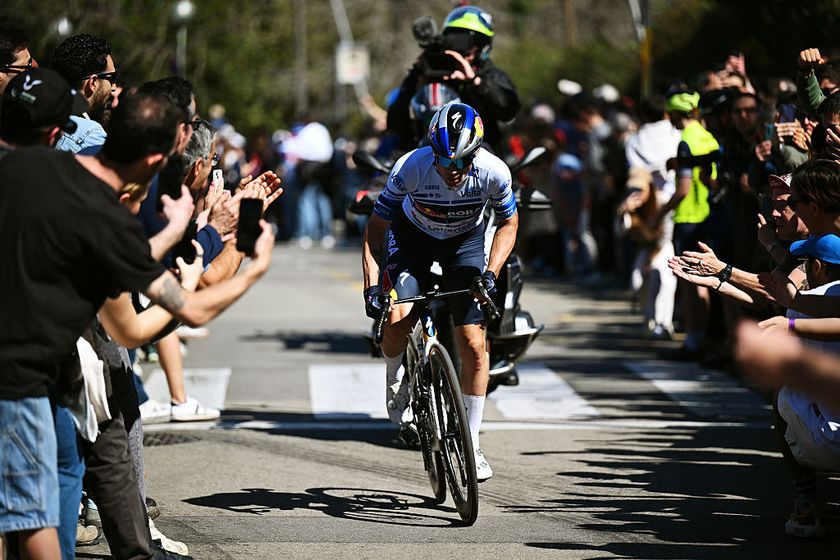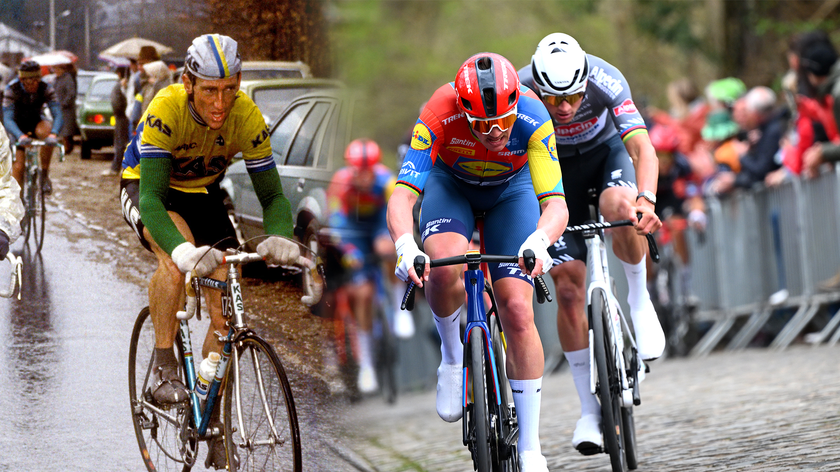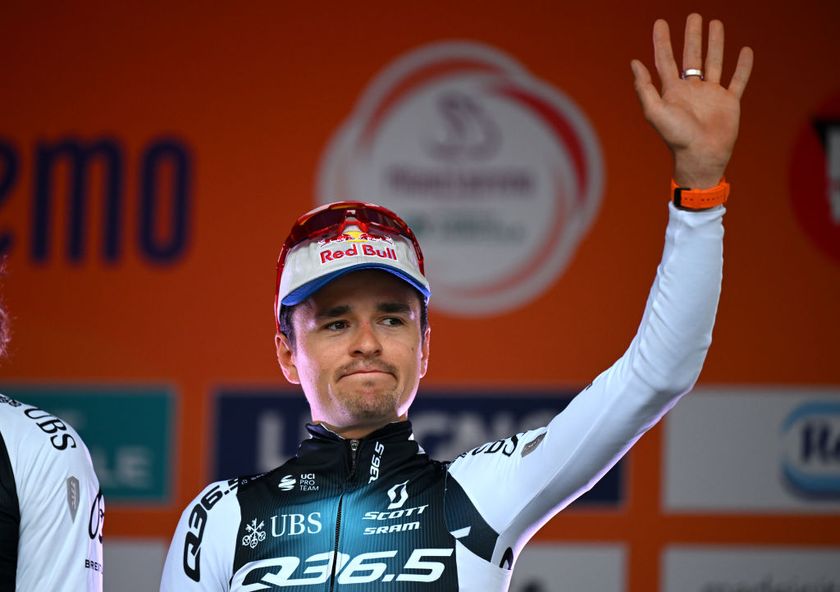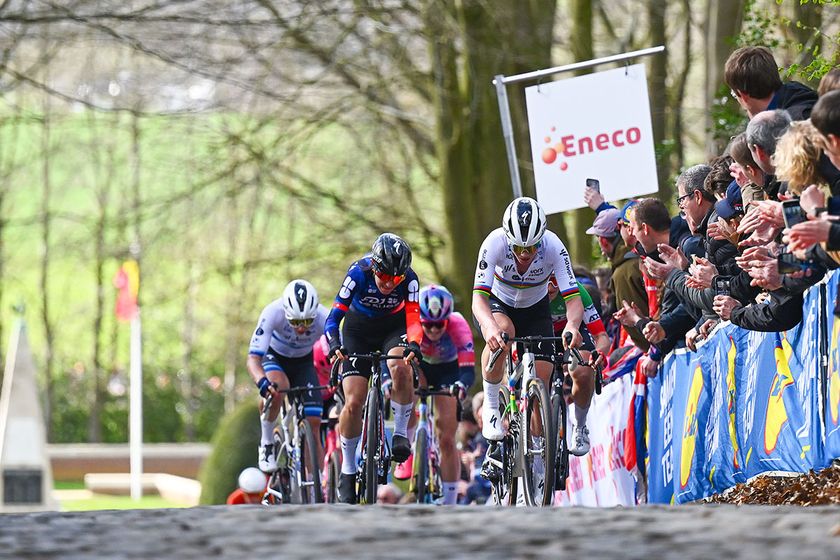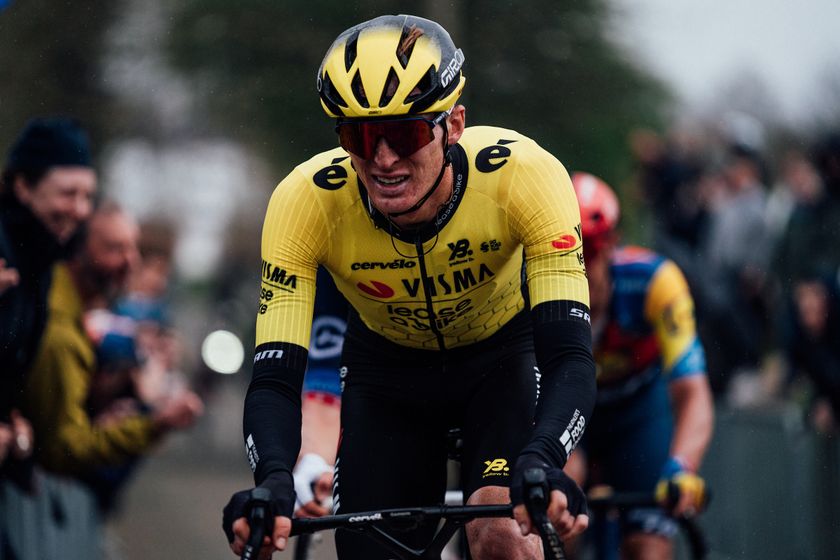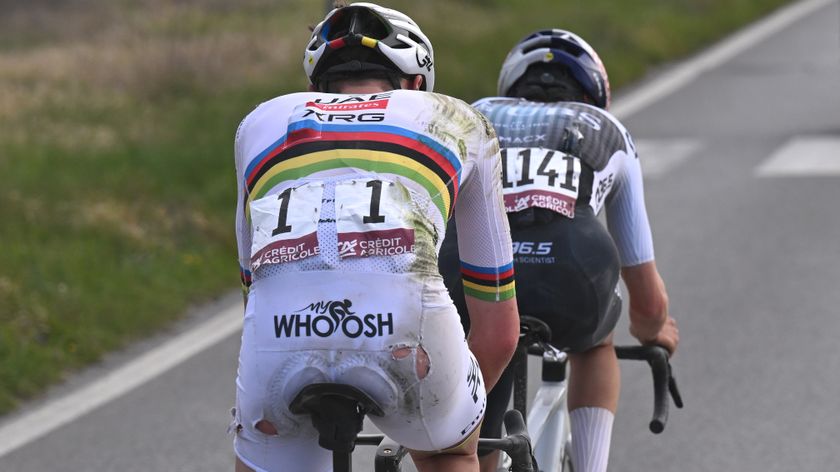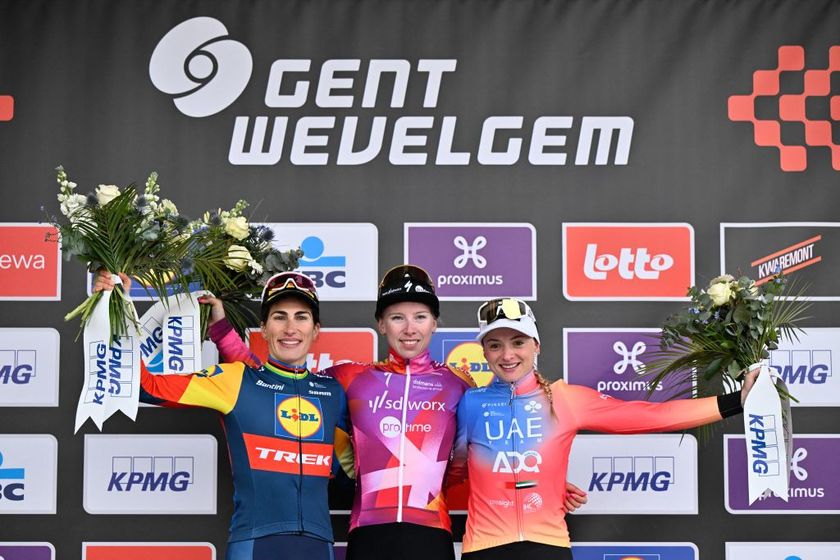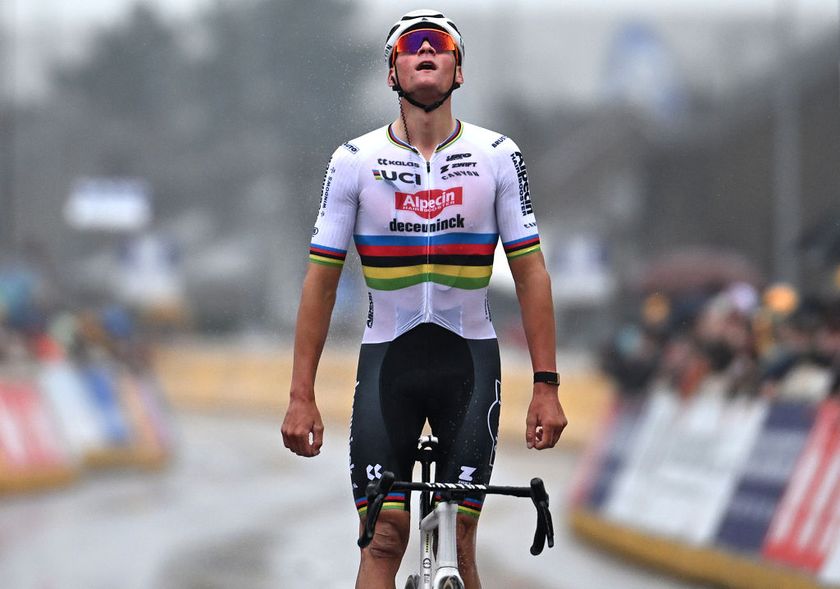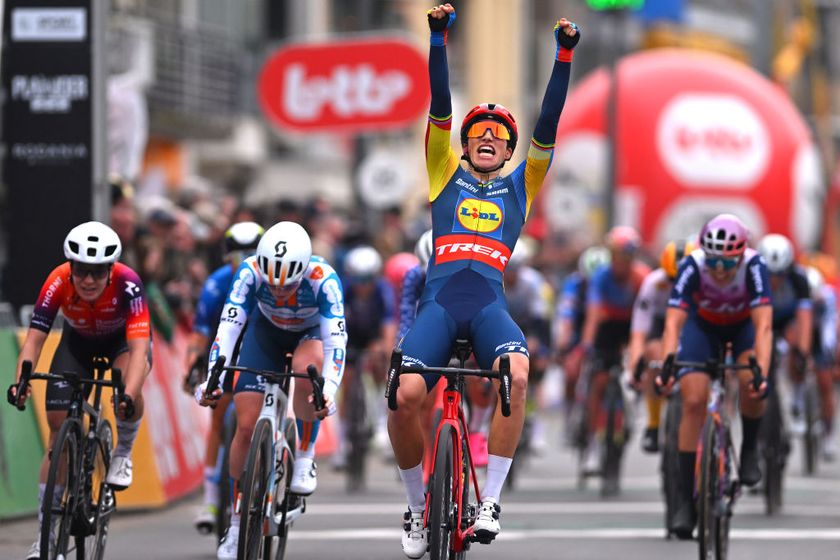Fitness questions and answers for November 22, 2006
Got a question about fitness, training, recovery from injury or a related subject? Drop us a line at...
Form & Fitness Q & A
Got a question about fitness, training, recovery from injury or a related subject? Drop us a line at fitness@cyclingnews.com. Please include as much information about yourself as possible, including your age, sex, and type of racing or riding. Due to the volume of questions we receive, we regret that we are unable to answer them all.
Carrie Cheadle, MA (www.carriecheadle.com) is a Sports Psychology consultant who has dedicated her career to helping athletes of all ages and abilities perform to their potential. Carrie specialises in working with cyclists, in disciplines ranging from track racing to mountain biking. She holds a bachelors degree in Psychology from Sonoma State University as well as a masters degree in Sport Psychology from John F. Kennedy University.
Dave Palese (www.davepalese.com) is a USA Cycling licensed coach and masters' class road racer with 16 years' race experience. He coaches racers and riders of all abilities from his home in southern Maine, USA, where he lives with his wife Sheryl, daughter Molly, and two cats, Miranda and Mu-Mu.
Kelby Bethards, MD received a Bachelor of Science in Electrical Engineering from Iowa State University (1994) before obtaining an M.D. from the University of Iowa College of Medicine in 2000. Has been a racing cyclist 'on and off' for 20 years, and when time allows, he races Cat 3 and 35+. He is a team physician for two local Ft Collins, CO, teams, and currently works Family Practice in multiple settings: rural, urgent care, inpatient and the like.
Fiona Lockhart (www.trainright.com) is a USA Cycling Expert Coach, and holds certifications from USA Weightlifting (Sports Performance Coach), the National Strength and Conditioning Association (Certified Strength and Conditioning Coach), and the National Academy for Sports Nutrition (Primary Sports Nutritionist). She is the Sports Science Editor for Carmichael Training Systems, and has been working in the strength and conditioning and endurance sports fields for over 10 years; she's also a competitive mountain biker.
Eddie Monnier (www.velo-fit.com) is a USA Cycling certified Elite Coach and a Category II racer. He holds undergraduate degrees in anthropology (with departmental honors) and philosophy from Emory University and an MBA from The Wharton School of Business.
Eddie is a proponent of training with power. He coaches cyclists (track, road and mountain bike) of all abilities and with wide ranging goals (with and without power meters). He uses internet tools to coach riders from any geography.
Get The Leadout Newsletter
The latest race content, interviews, features, reviews and expert buying guides, direct to your inbox!
David Fleckenstein, MPT (www.physiopt.com) is a physical therapist practicing in Boise, ID. His clients have included World and U.S. champions, Olympic athletes and numerous professional athletes. He received his B.S. in Biology/Genetics from Penn State and his Master's degree in Physical Therapy from Emory University. He specializes in manual medicine treatment and specific retraining of spine and joint stabilization musculature. He is a former Cat I road racer and Expert mountain biker.
Since 1986 Steve Hogg (www.cyclefitcentre.com) has owned and operated Pedal Pushers, a cycle shop specialising in rider positioning and custom bicycles. In that time he has positioned riders from all cycling disciplines and of all levels of ability with every concievable cycling problem.They include World and National champions at one end of the performance spectrum to amputees and people with disabilities at the other end.
Current riders that Steve has positioned include Davitamon-Lotto's Nick Gates, Discovery's Hayden Roulston, National Road Series champion, Jessica Ridder and National and State Time Trial champion, Peter Milostic.
Pamela Hinton has a bachelor's degree in Molecular Biology and a doctoral degree in Nutritional Sciences, both from the University of Wisconsin-Madison. She did postdoctoral training at Cornell University and is now an assistant professor of Nutritional Sciences at the University of Missouri-Columbia where she studies the effects of iron deficiency on adaptations to endurance training and the consequences of exercise-associated changes in menstrual function on bone health.
Pam was an All-American in track while at the UW. She started cycling competitively in 2003 and is the defending Missouri State Road Champion. Pam writes a nutrition column for Giana Roberge's Team Speed Queen Newsletter.
Dario Fredrick (www.wholeathlete.com) is an exercise physiologist and head coach for Whole Athlete™. He is a former category 1 & semi-pro MTB racer. Dario holds a masters degree in exercise science and a bachelors in sport psychology.
Scott Saifer (www.wenzelcoaching.com) has a Masters Degree in exercise physiology and sports psychology and has personally coached over 300 athletes of all levels in his 10 years of coaching with Wenzel Coaching.
Kendra Wenzel (www.wenzelcoaching.com) is a head coach with Wenzel Coaching with 17 years of racing and coaching experience and is coauthor of the book Bike Racing 101.
Steve Owens (www.coloradopremiertraining.com) is a USA Cycling certified coach, exercise physiologist and owner of Colorado Premier Training. Steve has worked with both the United States Olympic Committee and Guatemalan Olympic Committee as an Exercise Physiologist. He holds a B.S. in Exercise & Sports Science and currently works with multiple national champions, professionals and World Cup level cyclists.
Through his highly customized online training format, Steve and his handpicked team of coaches at Colorado Premier Training work with cyclists and multisport athletes around the world.
Brett Aitken (www.cycle2max.com) is a Sydney Olympic gold medalist. Born in Adelaide, Australia in 1971, Brett got into cycling through the cult sport of cycle speedway before crossing over into road and track racing. Since winning Olympic gold in the Madison with Scott McGrory, Brett has been working on his coaching business and his www.cycle2max.com website.
Richard Stern (www.cyclecoach.com) is Head Coach of Richard Stern Training, a Level 3 Coach with the Association of British Cycling Coaches, a Sports Scientist, and a writer. He has been professionally coaching cyclists and triathletes since 1998 at all levels from professional to recreational. He is a leading expert in coaching with power output and all power meters. Richard has been a competitive cyclist for 20 years
Andy Bloomer (www.cyclecoach.com) is an Associate Coach and sport scientist with Richard Stern Training. He is a member of the Association of British Cycling Coaches (ABCC) and a member of the British Association of Sport and Exercise Sciences (BASES). In his role as Exercise Physiologist at Staffordshire University Sports Performance Centre, he has conducted physiological testing and offered training and coaching advice to athletes from all sports for the past 4 years. Andy has been a competitive cyclist for many years.
Michael Smartt (www.cyclecoach.com) is an Associate Coach with Richard Stern Training. He holds a Masters degree in exercise physiology and is USA Cycling Expert Coach. Michael has been a competitive cyclist for over 10 years and has experience coaching road and off-road cyclists, triathletes and Paralympians.
Kim Morrow (www.elitefitcoach.com) has competed as a Professional Cyclist and Triathlete, is a certified USA Cycling Elite Coach, a 4-time U.S. Masters National Road Race Champion, and a Fitness Professional.
Her coaching group, eliteFITcoach, is based out of the Southeastern United States, although they coach athletes across North America. Kim also owns MyEnduranceCoach.com, a resource for cyclists, multisport athletes & endurance coaches around the globe, specializing in helping cycling and multisport athletes find a coach.
Burn out
Stair running
Quadricepts versus hamstrings
Pain in the trapezius
Bike position setup
Plumb line rule
Knee problems after time off
Crank length
Mountain bike saddle position
Cleat positioning
Leg length discrepancy
Burn out
This was my first big road bike season. I've ridden a mountain bike as a weekend warrior for about 8 years, did some road biking last year, but this year put in a lot of miles (for me) on the road. I finished off the season with a double century. I finished in the last quarter percent of riders, but I finished.
That was 2 months ago, and I've had a hard time wanting to get back out on the bike since then. What is going on? What can I do to get the desire back? I don't want to be done with biking, but my bikes hang in my garage like two stoic bats. Sometimes I look at them with a nostalgic feeling, rather than the excitement I used to have looking forward to the next ride. If you can help I would be eternally grateful.
Roger Mooney
Scott Saifer replies:
It is normal to lose interest in cycling after a major accomplishment ride. The more established your riding habit, the shorter the loss of interest, though it never gets much shorter than 2-3 weeks.
Stair running
In the off season I'm doing a bit less time on the bike and working in some running and stairs (yes, real stairs, 13 flights) as cross training.
I would like to know what type of running/stair workouts that I could do that would improve my cycling. I'm doing mostly tempo and endurance work on the bike.
Rob Polcyn
Proctorville, OH
Kim Morrow replies:
It's good to read that you are including variety in your off season. Since you have chosen to run stairs (13 flights as you mentioned) as cross training, here are a few suggested workouts.
Quadriceps versus hamstrings
What are the main differences in the quadriceps vs. hamstring utilization when riding in the aero position, and why is this important for triathletes? I've heard that increased seat angle/forward seat position equals greater quadriceps utilization. But isn't that bad from a muscle utilization perspective? Wouldn't you want to use all your muscles, like the hamstrings, so that a single muscle isn't excessively sore during the run afterwards?
Ben Greenfield
Steve Hogg replies:
Generally speaking you are correct though pelvic angle plays a part in muscle utilisation as well. If you are contemplating a steep seat tube angled 'tri' bike, the best advice is try extensively before you buy as they are not for everyone.
Pain in the trapezius
I am experiencing excruciating pain in the right trapezius during rides. What is the likely cause, apart from lack of cycling condition? Could it be over reach on that side?
Debbie Croucher
Steve Hogg replies:
The most likely causes are that you sit twisted on the seat and are either over reaching on the right side because of a pattern of left hip drop/rotation on each pedal stroke or you are dropping the right hip and are bracing against that challenge to on seat pelvic stability by thrusting the right shoulder forward and tensing the right arm.
Bike position setup
I am 18 years old and a recreational cyclist who rides with a group at the weekends and trains indoors 4-5 times during the week. I have been struggling with bike and cleat placement for a year now, and this problem has severely injured my morale when riding with a group as I am always concerned that I am losing large amounts of power due to poor bike setup.
My issue is that I was told incorrectly that my legs were different lengths by a coach who also fitted my bike, and that my cleats needed to be offset in order to compensate. At the time I tried it, and suffered major power losses due to the fact that I was using different pedal strokes for each leg, and that it felt as though I was pushing with my toes on the pedal in one leg.
I was later measured again by podiatrist who informed that my legs were not different lengths, but instead it could be a swiveling of the hips that causes the discrepancy. I’m not sure who to believe as I can feel a difference when i am walking and when i work out using a leg press machine.
Either way, unsatisfied with the fit I sought a new one in a local bike shop, who realigned my cleats to the same position among other small changes to the bike. I still suffer from this problem, and I find myself constantly shifting myself sideways to the right along the saddle because I am sliding left.
Is there anything I can do to fix this problem?
Benjamin Harris
Toronto
Steve Hogg replies:
Firstly, differential cleat position to compensate for a real or imagined leg length difference is about the worst way I can think of to tackle the problem. As you found, it changes the whole pattern of muscular enlistment and causes each leg to function substantially differently. This is not what any of us are trying to achieve. We are never going to have two identical legs but one of our goals should be to have them function as similarly as is possible within the constraints of our structure and function. Have a look at these posts regarding cleat position and ball position then position your cleats as suggested. That will put the cleat issue to rest.
Plumb line rule
I am female, 5'3" and do about 8-10 hours a week on either my road or mountain bike. My road bike is a Giant TCR 2, small, and this summer I fixed a problem I had with my road saddle fit - my weight was all being supported by soft tissue and for years and years I just dealt with it, rode a Terry Damselfly, thinking that's one of the prices I must pay for riding.
Then I learned about sit bones. I realized that they weren't even on the saddle and measured them. I now have a wider saddle, the Selle San Marco Aspide Glamour, to support my weight with my sit bones. However, in order to have my sit bones in the right place, I have to sit farther back on the saddle than I was used to doing with my previous saddle, but to reach the handlebars I needed to move the saddle as far forward as possible (my seat post has zero setback so that wasn't an option). That wasn't far enough forward so I also had to get a shorter stem (80mm).
Now when I drop a plumb line my knee is behind the pedal axel, about 1 inch back. I can't move the seat any farther forward. How much of my power is being compromised? Is there any sense in me even trying to move my cleats farther back? Would that only put my knee farther behind the axel? Am I now running into a problem of having the bike too big for me?
A year ago (when I was still just dealing with the saddle discomfort because I didn't know any better) I paid $150 to get ‘fit’ but now I've moved things around quite a bit. Is it best to just worry about my saddle fit and cleat position and not worry too much about the plumb line? How hard and fast is the plumb line rule?
Susan Musante
Steve Hogg replies:
Absolutely it is better to worry about seat and cleat position and forget about using a plumb line. Lining up limb segments or body parts with pedal axles is a very narrow view of one aspect of position that usually loses more in other areas than it gains in the one the focus is on.
Knee problems after time off
I have been riding problem-free for over ten years now, with the last few years spent racing road, track and mountain bikes. This year I spent 6 months overseas and not able to ride a bike at all.
Upon return to my riding routine I have begun to suffer from various forms of knee pain. I have a definite IT band tightness in my right leg which I have targeted in stretching routines; however, I am having several other painfull issues with my knees that I have never experienced before, riding the very same bikes with the very same geometry setup.
My question is whether or not it is possible that some of my specific riding muscles wasted away while I was off the bike and are now not providing the required support to the joints? I do admit I got back into cycling heavily quite quickly, so should I have done some specific strength building exercises for a longer build up period?
Ty
North Queensland
Scott Saifer replies:
It is not only possible but quite likely that you lost cycling specific strength, but it is also possible and likely that the cartilage has weakened as well.
Crank length
I'm a rather tall cyclist, around 6'5'' or 195ish centimeters. Was just wondering whether I should be considering a larger crank than what I already have. I ride a 175mm at the moment, but have been told I should be riding a larger size. Is the logic that the taller you are the longer the crank? But is it worth changing something that already works for me?
What are the pros and cons of a larger crank? Will I gain anything, e.g. more power?
Simon Frost
Steve Hogg replies:
It is logical that you use the crank length best suited for what you want to do with your body and bike. Your degree of function will play a larger part in determining what crank length is ideal for you rather than your leg length.
Mountain bike saddle position
The position of my saddle is 5 cm behind the centre of the bottom bracket on my full suspension and my hardtail. When I am on my full suspension I have the impression that I am more back behind the centre of the bottom bracket. Must I put my saddle more forward or is it an idea?
I have received the wedge but I don't know which part I must on the inside or the outside. When I stand right up my knee goes outside, but on the bike my knee goes inside. What do you suggest for the placement?
Roger Landeloos
Steve Hogg replies:
On a full suspension bike, the seat moves rearwards when you get aboard as the rear suspension sags much more than the front suspension. This means that the seat should be measurably further forward when you are off the bike to be in the same place as your hard tail when you are on the bike.
Cleat positioning
Driven by your postings on cleat position, a while back I ripped the whole soles off my Equipe Time shoes, and re-glued them further back. This put my foot fore-aft position in line with your advice, and the result was nothing less than stunning. Your analogy of the 'sweet spot' on a baseball bat was 100%. Suddenly I don't toe-down like a ballerina. I actually use my hamstrings. As a size 39 foot, and a bad pronator to boot, I suspect I have never (i.e. for many years) had my cleats far enough back, despite having them as far back as they are made to go.
So that's resolved then. But Q-factor still needs work. I have always been way more stable (feel of power) on a mountain bike. I think because, at least on my bikes, the MTB Q-factor is considerably wider. Am I right in thinking road bikes have gotten way narrower pedal-to-pedal in recent years?
I have put a washer inside each pedal to make my road bike Q-factor wider. This helps, but not enough. Are there any other options for making things a few mm wider still? I considered a triple chain ring on my road bike but there are apparently problems with bottom bracket compatibility. Are there any ways to extend the pedal spindle? Any cranksets that splay the cranks wider than others? Advice appreciated. Seems like an opportunity for manufacturers too.
Jim Robinson
New Zealand
Steve Hogg replies:
I'm glad that you got a result. Regarding Q-factor, it is an individual thing. If you are wide hipped or are tight in the external rotators of the hip, you will perform better with your feet further apart than close together.
Leg length discrepancy
I am a fairly serious amateur rider here in South Africa and have been racing road bikes for years. I have recently however purchased a mountain bike and have entered the Cape Epic next year which is an 8 day race over about 900 kilometers with lots of climbing.
My problem is that I have a right leg which is about 2cm shorter than the left. On my road bike I have managed to alleviate the problem by building up my Look cleats with Le Wedges. Now on the MTB I have SPD pedals and the wedges are totally ineffective which is causing me tremendous pain in my lower back on the right side (I think it's called the sacral iliac joint). I have tried building my shoe up by using a raised insert but it is not helping.
If I am to complete this race I am going to have to sort this problem out and I am getting desperate. Do you have any suggestions for me by any chance, I was thinking that maybe I should lengthen the right crank (on my short side) or alternatively shorten the left one to maintain clearance.
Marc de Fondaumiere
Steve Hogg replies:
Find a good boot maker. Take your right MTB shoe to him and have him pull off the sole and glue a full length build up between sole and upper made from high density EVA foam. Then he can glue it back on and hey presto, you are in business.
